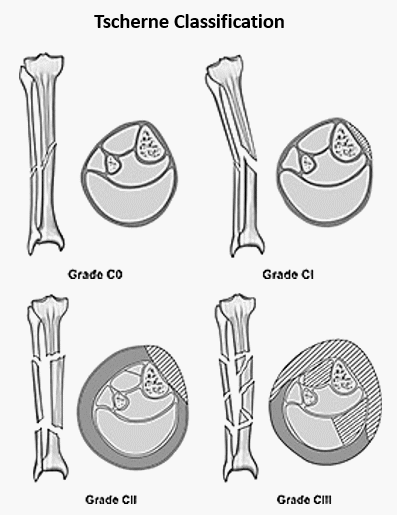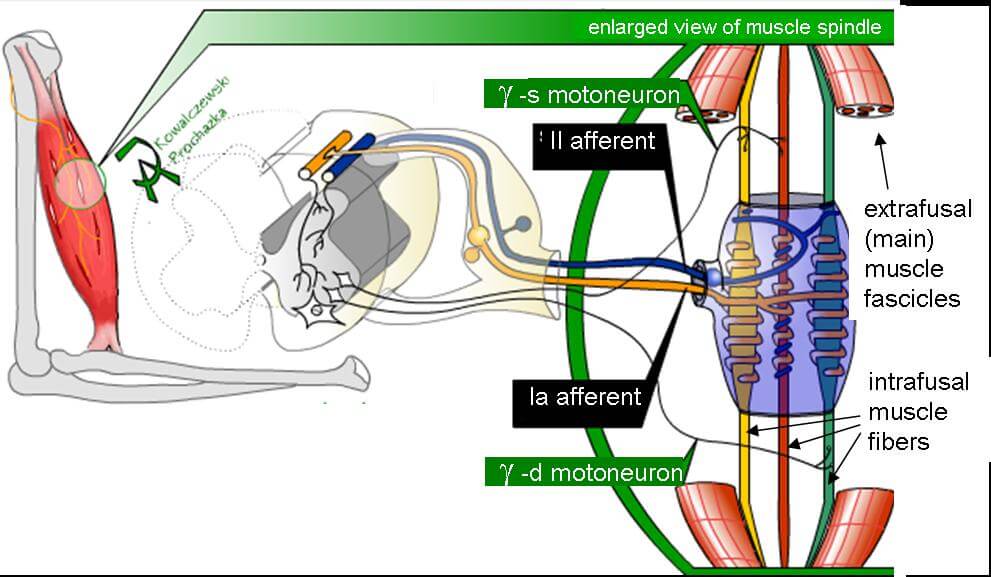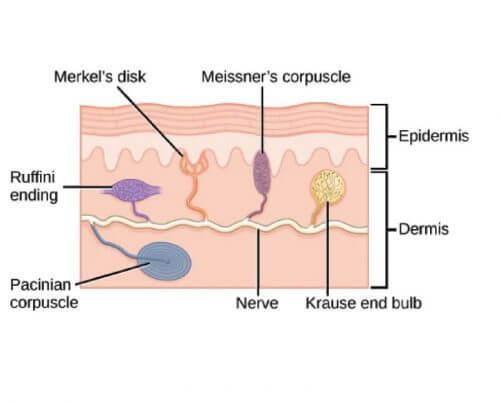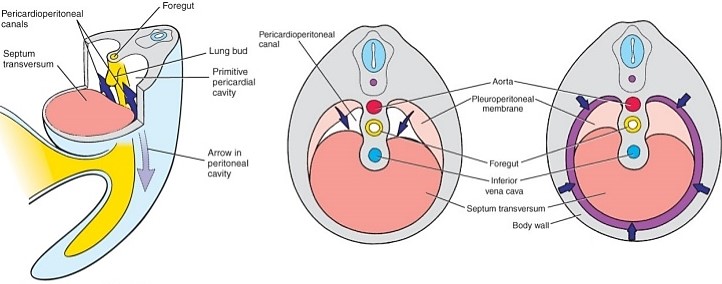The classification system for closed fractures is based on the physiologic concept that the energy imparted to the bone (and the resultant fracture pattern) directly correlates with the energy transferred to the surrounding soft tissues.

| Grade | Soft tissue injury | Fracture | Compartment |
| C0 | Absent or Negligible | Simple (Spiral) | Soft and/or Normal |
| C1 | Superficial abrasion or Skin contusion | Medium severity (Rotational ankle fracture dislocations) | Soft and/or Normal |
| C2 | Deep (contaminated) abrasion or Muscle contusion | Severe (Transverse or segmental) | Impending compartment syndrome |
| C3 | Extensive skin contusion, Crush injury with severe damage to underlying muscle, Morel-Lavallee lesion and/or vascular injury | Complex | Compartment syndrome |
This grading can aid in anticipating outcomes and optimizing appropriate treatment. Primary definitive fixation has been shown to be appropriate for lower-grade injuries, whereas staged treatment is more appropriate for higher-grade injuries. It is based largely on clinical examination.
Reference: Ibrahim DA, Swenson A, Sassoon A, Fernando ND. Classifications In Brief: The Tscherne Classification of Soft Tissue Injury. Clin Orthop Relat Res. 2017 Feb;475(2):560-564. doi: 10.1007/s11999-016-4980-3. Epub 2016 Jul 14. PMID: 27417853; PMCID: PMC5213932.


